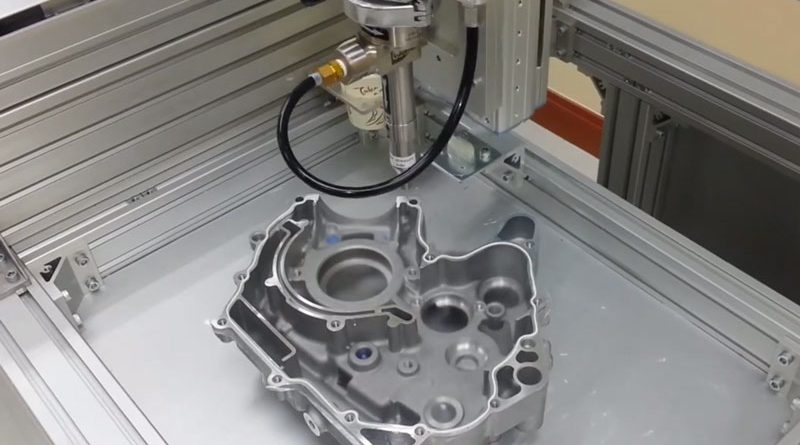Improving dispensing with robots
The use of robots for dispensing coating materials can increase productivity. Yamaha‘s RCX340 controller supports advanced motion capabilities and simplifies the configuration of the robot dispenser. It also allows for easy connection of multiple robots to be controlled simultaneously.
Yamaha Robotics offers robotized solutions for the dispensing of coating materials, which increases productivity.
To ensure a consistent volume of sealant is deposited in all locations, the dispensing mechanism must be controlled to throttle the flow of sealant in the slow-speed corners and increase delivery when the drive is moving more quickly. This is difficult to achieve, leaving companies dependent upon a small number of staff that have the necessary knowhow. If setup poorly, inconsistencies such as excessive sealant volume at corners can occur, ultimately leading to more rejected units at the end of the line. On the other hand, setting a constant slow drive speed and dispense rate can simplify control of the process, at the cost of longer tact time and lower overall throughput.
Servo-linked dispensing
Various industries are now adopting robotic automation to increase productivity and ensure future-proof flexibility. Yamaha Robotics has additionally engineered ease of use into its RCX series of robot controllers and associated graphical programming tools, to help users maximise the advantages of this technology.
The Yamaha RCX340 controller supports enhanced motion capabilities and simplifies robot dispenser setup. In particular, the dispensing-control function can be linked to servo control, enabling the RCX340 to control the dispense rate in conjunction with the moving speed to ensure high precision, high speed, and stable coating thickness. This “servo-linked dispensing” is applicable to Yamaha SCARA robots and cartesian robots.
Multiple robots can be controlled simultaneously
In addition, the controller allows easy linking of multiple robots to be controlled simultaneously and supports an extended instruction set, which includes dedicated vision instructions that simplify programming and help minimise equipment startup time. The RCX STUDIO 2020 programming environment contains debugging functions that support multiple tasks and provides features to accelerate program input and enable rapid setup.
Moreover, leveraging communication interfaces commonly used throughout industrial automation permits easy integration in an existing factory environment. In addition to RS-232C and Ethernet ports, the RCX340 supports popular fieldbuses such as CC-Link, EtherNet/IP, DeviceNet, PROFIBUS, PROFINET, and EtherCAT. Connections with general-purpose servo amplifier or third-party vision systems are also easily implemented and simplify introducing robot technology to legacy manufacturing processes.

